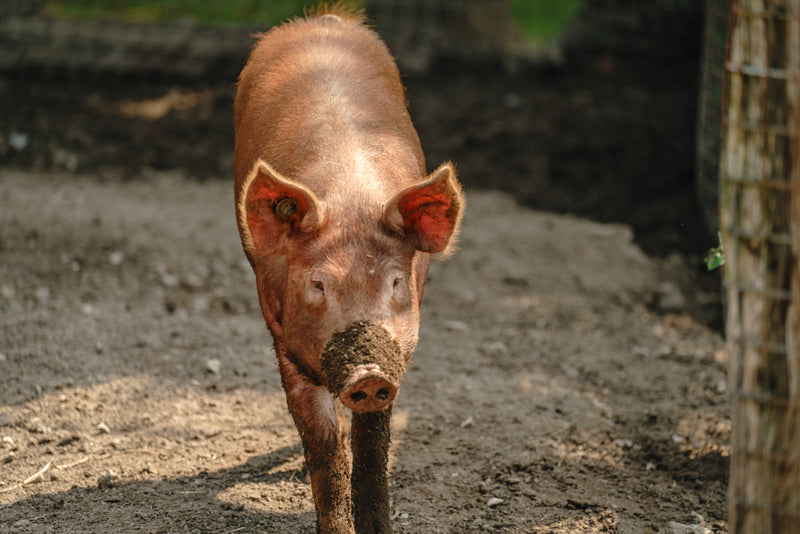Master the Art of Caring for Your Dog: A Comprehensive Guide
For many of us, our furry friends are more than just pets – they’re family. And just like any family member, they deserve the best care possible. But with so much conflicting information out there, how do you know what’s truly best for your canine companion? Fear not, because in this comprehensive guide, we’ll cover everything you need to know to master the art of caring for your dog. From nutrition and exercise to grooming and behavior, we’ll leave no stone unturned in our quest to help you become the ultimate dog caretaker. So grab a leash and let’s get started!

Understanding Your Dog’s Basic Needs: A Guide to Proper Nutrition and Exercise
Proper nutrition and exercise are essential for your dog’s well-being. Your dog’s diet should consist of high-quality protein, fats, carbohydrates, vitamins, and minerals that meet their nutritional requirements. Consult with a veterinarian to determine the best type of food and feeding schedule for your dog based on factors such as age, breed, and activity level.
In addition to a healthy diet, regular exercise is crucial for maintaining your dog’s physical and mental health. Daily walks or runs can help prevent obesity while also providing an opportunity for socialization. Engage in activities like fetch or tug-of-war to stimulate both their mind and body.
Remember to provide ample fresh water at all times. Clean their bowls regularly to prevent bacteria buildup. Observe your dog’s eating habits closely; sudden changes may indicate underlying health issues that require veterinary attention.
By understanding your dog’s basic needs for proper nutrition and exercise, you can ensure they stay healthy throughout their life.
Keeping Your Dog Healthy: Tips for Preventing Common Health Issues
Preventing common health issues is an essential part of caring for your dog. Regular veterinary check-ups are crucial to catch any potential health problems early on. Additionally, keeping up with vaccinations and preventative medications can help protect your dog from diseases such as heartworm and tick-borne illnesses.
Maintaining good dental hygiene is also important for your dog’s overall health. Brushing their teeth regularly and providing them with dental chews can help prevent periodontal disease.
Another aspect of keeping your dog healthy is managing their weight. Obesity can lead to a range of health issues, including joint problems and diabetes. Make sure to feed your dog a balanced diet and provide them with plenty of exercise to keep them at a healthy weight.
Finally, be aware of any changes in your dog’s behavior or physical condition. If you notice anything unusual, such as lethargy or loss of appetite, contact your veterinarian right away. By staying vigilant and proactive about your dog’s health, you can help ensure they live a long and happy life.

Grooming Your Dog: From Bath Time to Nail Trimming
Keeping your dog clean and well-groomed is crucial for their health and happiness. Regular baths will keep their coat shiny and help prevent skin conditions, while also keeping them smelling fresh. Use a high-quality shampoo specifically designed for dogs, and rinse thoroughly to avoid any irritation.
Nail trimming is another important grooming task that should be done regularly. Long nails can cause discomfort and even affect your dog’s posture, so it’s essential to trim them every few weeks. Use clippers designed for dogs or opt for a professional groomer if you’re not confident in doing it yourself.
Brushing your dog’s teeth may also seem like an extra chore but is necessary in preventing dental diseases. Choose a toothbrush made specifically for dogs and use toothpaste that is safe for them to swallow.
Lastly, don’t forget about the ears! Check regularly for signs of infection, such as redness or discharge. Wipe the ear with cotton balls dampened with an ear cleaner solution specific to dogs until visibly clean.
By including these grooming tasks into your routine on a regular basis, you’ll keep your pup happy and healthy from head-to-toe!

Training Your Dog: Effective Techniques for Positive Reinforcement
Positive Reinforcement: The Key to Effective Dog Training
Positive reinforcement is the most effective technique for training your dog. This method involves rewarding your dog for good behavior, rather than punishing them for bad behavior. Rewards can include treats, praise, or playtime. The key is to be consistent and use rewards immediately after the desired behavior occurs. This will help your dog associate the behavior with the reward. Another important aspect of positive reinforcement is to avoid using physical punishment or yelling, as this can cause fear and anxiety in your dog. By using positive reinforcement, you can build a strong bond with your dog and create a happy and well-behaved companion.
Teaching Tricks: Using Positive Reinforcement for a Well-Behaved Pup
Teaching your dog tricks is not only fun, but it also helps with their mental stimulation and overall obedience. Using positive reinforcement techniques such as treats and praise can be highly effective in teaching your pup new tricks. Start with simple commands like “sit” and “stay” before moving on to more complex tricks like “roll over” or “play dead”. Remember to always be patient and consistent with your training, and never use physical punishment as it can harm the bond between you and your furry friend. With dedication and positive reinforcement, your dog will be performing impressive tricks in no time!
Clicker Training: A Step-by-Step Guide for Successful Results
Clicker training is a highly effective technique used to reinforce positive behaviors in dogs. It involves using a small device that makes a clicking sound when pressed, which signals to the dog that they have done something correct. Clicker training can be used for basic commands like “sit” and “stay”, as well as more advanced tricks. The key to success with clicker training is consistency and timing – the click should always come immediately after the desired behavior, followed by a treat or reward. With patience and dedication, clicker training can help strengthen the bond between you and your furry friend while improving their obedience skills.
Common Mistakes in Dog Training and How to Avoid Them
When training your dog, it’s important to avoid common mistakes that can hinder their progress. One key phrase to remember is positive reinforcement – rewards for good behavior – as opposed to punishment for bad behavior. This approach builds trust and a stronger bond between you and your furry friend. Avoid using physical force or yelling, which can cause fear and negatively impact the training process. Another important phrase is consistency in commands, using the same words every time so that your dog associates those words with specific actions or behaviors. These small adjustments in training methods can make all the difference in successfully teaching your dog new skills and manners.
Building a Strong Bond with Your Dog: The Importance of Playtime and Affection
The Benefits of Playtime and Affection for Your Dog’s Well-Being
Playtime and affection are crucial for the overall well-being of your furry friend. Regular playtime helps to keep your dog physically active, which is essential for maintaining their health and preventing obesity. Additionally, playtime can also improve your dog’s mental health by reducing stress and anxiety.
Affection, on the other hand, helps to strengthen the bond between you and your dog. Regular cuddles, petting, and verbal praise can make your dog feel loved and secure. This can lead to a happier and more well-adjusted pet.
Overall, incorporating playtime and affection into your daily routine with your dog is essential for their physical and mental health. It also helps to strengthen the bond between you and your furry companion.
How to Incorporate Playtime and Affection into Your Daily Routine with Your Dog
Playing and showing affection to your dog is crucial in building a strong bond with them. Regular playtime and affectionate gestures can help reduce stress and anxiety in dogs, making them happier and healthier. You can incorporate playtime into your daily routine by taking your dog for walks, playing fetch, or engaging in interactive games like tug-of-war. Don’t forget to give your dog plenty of praise and cuddles to show them how much you care. Remember, spending quality time with your furry friend is not only beneficial for them but also for you as a pet owner.
Understanding Your Dog’s Play Style and Preferences
playtime and bonding are crucial aspects of caring for your dog. However, it’s important to understand that not all dogs enjoy the same types of play. Some may prefer a game of fetch, while others may enjoy tug-of-war or simply running around in the backyard. It’s important to observe your dog’s behavior and body language to determine their preferred play style. Additionally, incorporating affectionate gestures such as belly rubs or cuddling during playtime can strengthen the bond between you and your furry friend. Remember to always prioritize your dog’s comfort and preferences during playtime to ensure a happy and healthy relationship.
Overcoming Common Challenges in Building a Strong Bond with Your Dog through Playtime and Affection
Building a strong bond with your dog through playtime and affection is crucial for their overall well-being. However, it’s not always easy to overcome common challenges that may arise. One important key phrase to keep in mind is “positive reinforcement.” Rewarding good behavior during playtime and showing affection can reinforce the bond between you and your dog. Another key phrase is “consistency.” Regular playtime and affectionate interactions can help establish a routine that your dog will come to expect and look forward to. With patience, persistence, and these key phrases in mind, you can build a strong bond with your furry friend that will last a lifetime.
Caring for Your Senior Dog: How to Adjust Their Care as They Age
As your dog ages, their needs will change and it’s important to adjust their care accordingly. Senior dogs may experience joint pain, decreased mobility, and changes in appetite. It’s important to monitor their weight and adjust their diet as needed to prevent obesity. Regular exercise is still important, but it may need to be modified to accommodate any physical limitations.
Regular vet check-ups become even more important as your dog ages. Your vet can monitor for any age-related health issues such as arthritis or dental problems. They may also recommend supplements or medications to help manage any health issues.
In addition to physical care, senior dogs also benefit from mental stimulation. Puzzle toys and interactive games can help keep their minds sharp and prevent boredom. Providing a comfortable bed and plenty of affection can also help them feel secure and loved in their golden years.
By adjusting your care routine as your dog ages, you can ensure they continue to live a happy and healthy life well into their senior years.
In conclusion, caring for your dog is a multifaceted task that requires attention to their basic needs, health, grooming, training, and building a strong bond. By following the tips and techniques outlined in this comprehensive guide, you can become a master at caring for your furry friend. Remember to adjust your care as your dog ages and to always show them love and affection. If you’re looking for high-quality products to aid in your dog’s care, be sure to visit our shop for a wide selection of items that will help keep your pup happy and healthy. Thank you for reading and happy dog caring!
Answers
Who should I ask for advice on how to care for my dog?
Ask your veterinarian for professional advice on dog care.
What should I feed my dog to keep them healthy?
Feed your dog high-quality dog food and avoid human food.
How often should I take my dog to the vet for check-ups?
Take your dog to the vet at least once a year for a check-up.
Who can help me train my dog to behave properly?
Consider hiring a professional dog trainer for effective training.
What should I do if my dog gets sick or injured?
Take your dog to the vet immediately for proper diagnosis and treatment.
How can I prevent my dog from developing bad habits?
Consistent training, exercise, and positive reinforcement can prevent bad habits.




Leave a Reply